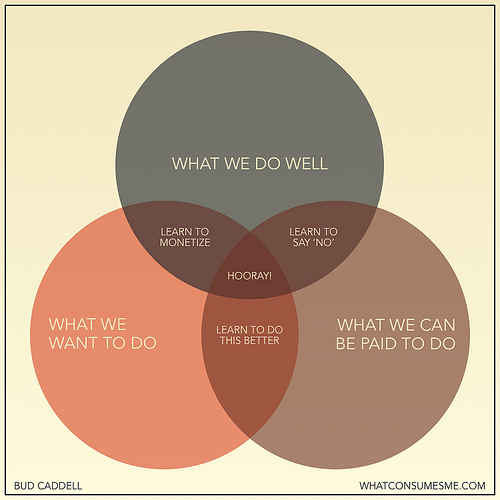The discussion of right-brain and left-brain thinking in business is a hot topic, thanks in particular to Daniel Pink’s wonderful book, A Whole New Mind. In the June 2009 issue of the Harvard Business Review, the article Innovation in Turbulent Times covers famous left/right, business/creative partnerships such as David Packard/Bill Hewlett, Pierre Wertheimer/Coco Chanel among others.
The need and effective paring of rational, linear and logical thinking with imaginative, creative, and holistic thinking is as obviously important as it is difficult to do well. I see this all the time working in the web domain of information technology, were engineering, design and project delivery frequently intersect.
While its fun to debate what left or right-brained skills are more important these days, one thing is certain: business is “both-brained”. Consider this poignant excerpt from the HBR article:
Management might need better visioning skills to foster a culture of curiosity and greater risk taking–primarily right-brain activities. Left-brain analytic tools might be needed to steer innovation investments toward the most promising areas. The business might need more creativity to generate ideas, but also analytics to constrain unprofitable projects. The right-brain design process might not be strong enough to transform intriguing ideas into practical products. Or the analytic left brains might need to fund the product pipeline to favor a different mix of large and small bets. Sometimes the products are fine but marketing needs to create stronger, more emotional bonds with customers, or engineers need to boost efficiency and profitability through improvements in cost or quality.
It’s as relevant in the context of a business as it is in a career. In the latter, the challenge is to manage the “partnership” of your two brain hemispheres as well as some of the successful business examples we all admire. As any brief study of neuroscience will yield, nearly everything we do uses both sides of brain. The art is in realizing your strengths or natural “handedness”, and learning to cultivate practices that encourage thinking in new ways.
Perhaps all this makes the most famous both-brainer of them all, Leonardo da Vinci, even more relevant to our demanding modern careers.

